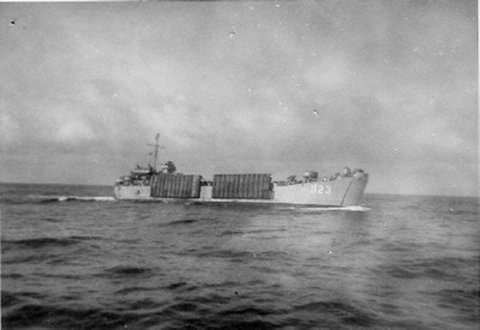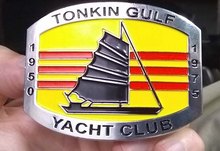 |
|||||||||||||||||||||||||||||||||||||||||||||||||||||||||||||||||||||||||||||||||||||||||||||||||||||||||||||
| TO RECEIVE A NOTIFICATION EMAIL AS SOON AS THE | |||||||||||||||||||||||||||||||||||||||||||||||||||||||||||||||||||||||||||||||||||||||||||||||||||||||||||||
| UNDERWAY! 2026 WALL CALENDAR IS SHIPPABLE - CLICK HERE |
|||||||||||||||||||||||||||||||||||||||||||||||||||||||||||||||||||||||||||||||||||||||||||||||||||||||||||||
 |
|||||||||||||||||||||||||||||||||||||||||||||||||||||||||||||||||||||||||||||||||||||||||||||||||||||||||||||
 |
|||||||||||||||||||||||||||||||||||||||||||||||||||||||||||||||||||||||||||||||||||||||||||||||||||||||||||||
| For RATING SHIRTS - Click on your Rating Abbreviation below: | |||||||||||||||||||||||||||||||||||||||||||||||||||||||||||||||||||||||||||||||||||||||||||||||||||||||||||||
|
|||||||||||||||||||||||||||||||||||||||||||||||||||||||||||||||||||||||||||||||||||||||||||||||||||||||||||||
| Click on your Rating abbreviation above: | |||||||||||||||||||||||||||||||||||||||||||||||||||||||||||||||||||||||||||||||||||||||||||||||||||||||||||||


U.S.S. SEDGEWICK COUNTY
(LST-1123)WE FOUGHT THE GOOD FIGHT!
Click to view crew list
USS SEDGEWICK COUNTY (LST-1123 ) - a LST-542-class LST
In Commission 1945 to 1969LST-1123 Deployments - Major Events
| Add a LST-1123 Shellback Initiation | Add a LST-1123 Deployment - Major Event | ||||
| Month | Year | to | Month | Year | Deployment / Event |
|---|---|---|---|---|---|
| NOV | 1944 | - | Keel Date: 1 NOV 1944 at Chicago Bridge & Iron Company | ||
| JAN | 1945 | - | Launch Date: 29 JAN 1945 | ||
| FEB | 1945 | - | Commissioned: 19 FEB 1945 | ||
| AUG | 1966 | - | Shellback Initiation - 1 AUG 1966 - Pacific Ocean | ||
| JUL | 1967 | - | DEC | 1969 | West Pac-Viet Nam |
| DEC | 1969 | - | Decommissioned: 6 DEC 1969 | ||
LST-1123 General Specifications
Class: LST-542-class LST
Complement: 7 Officers and 204 Enlisted
Displacement: 1490 tons
Length: 328 feet
Beam: 50 feet
Draft: 8 feet
Final Disposition: Transferred to Malaysia 7 October 1976
USS SEDGEWICK COUNTY (LST-1123)
LST-1123
was laid
down on 1 November 1944 by the Chicago
Bridge and Iron Co., Seneca, Ill.; launched on 29 January 1945; sponsored by Miss Betty Lou Bailey; and commissioned on 19 February 1945, Lt. (jg.) John H. Cleague III, USNR, in command.
Completing shakedown toward the end of March, LST-1123 loaded
cargo at Mobile, Ala., and sailed for the Pacific on the 29th. She
arrived at San Diego in mid-April; transported rescue boats to San
Francisco; and departed the latter port on the 22d loaded with LVTs,
vehicles, and fuel oil. On 2 May, she arrived at Pearl Harbor; offloaded her cargo; and then
commenced amphibious exercises. On 2 June,
with Army Quartermaster Corps and
Navy Construction Battalion personnel
and cargo embarked, she sailed for the Marshalls, Marianas, and Ryukyus.
Arriving off Okinawa on 28 July, she remained there until
after the Japanese surrender, then returned to the Marshalls and
Marianas. During September, she carried occupation troops from
the latter islands to Kyushu, Japan. Then, in late October and early November, she
performed a similar service for units moving from the Philippines to
Honshu.
On 9 November, LST-1123 departed Honshu and sailed
east. Steaming via the Marianas and the Hawaiian Islands, she arrived at San
Francisco on 8 January 1946; underwent overhaul at Seattle; then commenced
operations out of San Diego. For the next four years, • the
LST continued to ply the waters off the west coast, primarily
in the California area, but with occasional cargo and training operations in
Hawaiian and Alaskan waters.
In late June 1950, while LST-1123 was undergoing overhaul
at San Francisco, the Army of North Korea crossed the 38th Parallel asd
pushed south to occupy most of the Republic of Korea (ROK). By the end of July,
the LST had returned to San Diego; loaded Construction Battalion equipment
at Port Hueneme; and sailed west.
At Yokosuka by the end of August, she shifted to Kobe;
and, on 10 September, sailed for the embattled Korean peninsula to
participate in the amphibious landing at Inchon. On the afternoon of the 15th,
she anchored off Blue Beach and began launching LVTs under
protective fire from the covering force. Then, she remained in the Inchon
area into October, shuttling passengers and cargo from transports and cargo
ships in the harbor.
On 15 October, she departed Inchon. Ten days later, she
arrived off Wonsan and, as the 1st Marine Division was
landed administratively on the Kalma peninsula, commenced shuttle
operations similar to those at Inchon. From 1 November until 3 November,
she transported ROK Marines to, and landed them at, Kosong; then shifted
back to Wonsan.
By the 18th, U.S. Marines had reached the Chosin Reservoir;
ROK forces were moving on Chongjin; and U.S. Army units were pushing toward
North Korea's northern borders. Hungnam had been chosen as a new supply
center, and LST-1123 was ordered to carry tanks and other vehicles
to that port.
On 28 November, she headed back to Japan, whence she
returned to the west coast of Korea. From 5 December 1950 until 7
January 1951, she remained in the Inchon area, then carried troops
and cargo to Taechon. At mid-month, she returned to Yokosuka. In February, she
carried POW's from Pusan to Koje Do. In March, she continued operations
in the Pusan area and, in early April, she returned to Yokosuka, whence she got
underway for California on the 25th.
Arriving at San Diego on 23 May, LST-1123 conducted
local operations through the remainder of the year. During the winter of
1952, she underwent overhaul at San Francisco; and, on 26 May, got underway
to return to the Far East. On 30 June, she arrived at Yokosuka;
shifted to Sasebo at the end of the month; and, by 2 August, was back in
Pusan harbor to start her second tour in the Korean combat zone.
Shuttle runs to Japan and to Pongam Do occupied the
first part of the month. She then returned to Japan and,
into October, conducted training exercises. On 10 October,
she sailed for Korea. On the 15th, she participated in an amphibious feint
at Kojo; and, on the 17th, she returned to Japan. By the 20th, she was
back at Inchon, whence, into late November, she carried ammunition
to U.N.-held offshore islands.
LST-1123 spent December at Yokosuka; and,
in January 1953, she steamed back to Inchon. From there she
sailed to Pusan; made cargo runs to Kojo Do and back to Inchon; then
proceeded to Yokosuka, whence she sailed for San Diego, arriving at the latter on
5 March.
For the remainder of 1953, LST-1123 operated off
the west coast. In January 1954, she again sailed for the Far
East. She delivered landing craft and vehicles to Yokosuka
in late February; conducted amphibious evercises in the Volcano Islands
in March, off Korea in April, and in Japanese waters in July. During
those months and through September, she also carried cargo between
Japanese and Korean ports. In October, she sailed for home.
After her arrival on 10 November, LST-1123 operated off
the west coast into 1955. That spring, she began inactivation at Astoria;
and, in the summer, she returned to San Diego. Named Sedgwick County on
1 July 1955, she was decommissioned on 9 September and berthed with the
Reserve Fleet.
Sedgwick County remained berthed at San Diego
until recommissioned on 4 June 1966. Assigned to Landing Ship
Squadron 3 and homeported at Guam, she was ordered west in November for her
first tour in her third western Pacific war. On her arrival in Vietnamese waters, Sedgwick
County began carrying troops, cargo, and ammunition to Allied forces
on the coast and in the Mekong Delta area. In late December 1966 and early
January 1967, she supported operation "Deck House V" in the Delta
area; then, from 2 to 13 January, she again conducted shuttle runs between Da Nang, Chu
Lai, and Cua Viet. At mid-month, she headed for home; but, on 20 February,
she departed Guam and headed west again. Early March was spent at Kaohsiung,
Taiwan; and, on the llth, the LST returned to Da Nang to resume shuttle
runs. Continuing resupply operations into April, she was back at Guam from 3 May to 5
June; but, by mid-June, she was again off the Vietnamese coast.
On the 12th, Sedgwick County arrived at Vung Tau, whence
she resupplied ships conducting "Market-Time" operations.
On 8 July, she anchored in Subic Bay for two weeks rest, then returned to
Da Nang and cargo runs for the Naval Support Activity there. Her duties were
interrupted at the end of August for a call at Hong Kong. She then
returned to Subic Bay and Da Nang, resumed resupply shuttle operations, and continued
them until late in December.
Christmas 1967 was spent at Kaohsiung; but with the new
year, 1968, the LST returned to Vietnam. During January, she resupplied
Cua Viet. Upkeep at Subic and a call at Hong Kong took her into February;
and, at mid-month, she began supporting riverine forces from Vung Tau.
On 4 April, the LST returned to Guam for overhaul. In
June, she conducted exercises in Japanese waters. In July, she returned to
the Philinpines; and, on 18 August, she resumed support of
"Market-Time" activities in South Vietnam as CTU 115.3.9.
Relieved by Litchfield County in late September, Sedgwick
County moved north to Da Nang; loaded a causeway section; then steamed
for Subic and Guam. Arriving on 17 October, she sailed for Da Nang
on 20 November to shuttle cargo to Cua Viet and Tan My. In late December,
she headed for Hong Kong, thence, at the end of the year, continued on
to Sasebo, Japan, for an extended upkeep period.
In mid-April 1969. Sedgwick County returned to South
Vietnam and beejan a tour as sunport and re-supply LST for the Naval Support
Activity, Saigon. During June and early July, she was in the Philippines;
and, on 13 July, she returned to Da Nang to join in operations to redeploy
Marines from Vietnam. On 6 August, she completed her second run from Vietnam to
Okinawa; and, on the 8th, she headed for Guam.
Arriving on the 14th, Sedgwick County prepared for
inactivation. She was decommissioned on 6 December 1969;
and, in 1970, preparations were made to tow her to Vallejo, Calif., for
berthing with the Pacific Reserve Fleet at Mare Island.
LST-1123 earned six campaign stars for
operations during the Korean Conflict and six for service off Vietnam.
[Note: The above USS SEDGEWICK COUNTY (LST-1123) history may, or may not, contain text provided by crew members of the USS SEDGEWICK COUNTY (LST-1123), or by other non-crew members, and text from the Dictionary of American Naval Fighting Ships]
